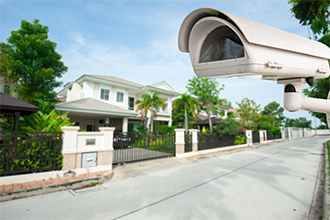Professional Installation and Monitoring Associations Dispute Google’s Statement, “Security Systems Often Use Microphones”

The Monitoring Association (TMA) and the Electronic Security Association (ESA), (March 5, 2019, Vienna, Va. and Irving, Tx) – Recent reporting by Business Insider, CNN Business and many other publications have highlighted the undisclosed, on-board microphone discovered in Google’s Nest Guard Security Device—raising serious privacy concerns among consumers.
The Monitoring Association (TMA) and the Electronic Security Association (ESA), trade associations representing professionals who install and monitor security and life safety technologies in homes and businesses, call into question the validity of Google’s published statements concerning the use of microphones in security devices. According to TMA and ESA, statements such as, “security systems often include microphones to provide features that rely on sound sensing,” misrepresent the vast majority of today’s residential security systems installed throughout the country.
Since audio recording includes privacy and legal complexities, it’s not extremely common in residential installations. Security professionals and integrators consult with customers and ensure all federal and state laws are abided by.
“Adding audio surveillance can certainly make for a more robust system,” says ESA President, Chris Mosley. “We’re seeing exciting advancements in the audio surveillance category, such as acoustic sensors and microphones that can help us detect gunfire or when voices become elevated that could indicate potential violence. However, sweeping statements to infer that residential systems commonly have this feature are simply not accurate.”
Louroe Electronics, an ESA Member company and 40-year-old manufacturer of audio-based technologies concurs with this analysis. “Sound-based technology in security systems is common in law enforcement, institutional, and smart city installations. However, the use of microphones for surveillance in residences is extremely rare on account of heightened expectations of privacy,” says the company’s CEO, Richard Brent.
"Sweeping statements to infer that residential systems commonly have this feature are simply not accurate.” - ESA President Chris Mosley
“Security systems are now an important part of the customer home experience in that we can integrate with audio assistance,” says Ivan Spector, TMA President. “However professionally installed and monitored security systems are not designed to record data and conversations unbeknownst to our customers.”
According to both associations, adding microphones and audio capabilities to security systems adds another level of precaution that must be taken to install the system in a way that protects the privacy of the consumer.
Professionally installed systems have the backing of technology experts who know the full capability of the system and its components and can appropriately safeguard these systems, so as not to compromise privacy.
Visit www.tma.us to learn more about The Monitoring Association or to find an ESA security professional in your area, visit www.alarm.org.
About The Monitoring Association
The Monitoring Association (TMA), formerly the Central Station Alarm Association (CSAA), is an internationally-recognized non-profit trade association that represents professional monitoring companies, security systems integrators, and providers of products and services to the industry. Incorporated in 1950, TMA is legally entitled to represent its members before Congress and regulatory agencies on the local, state and federal levels, and other authorities having jurisdiction (AHJs) over the industry. Learn more online at https://tma.us/about-tma/.
About the Electronic Security Association (ESA)
Established in 1948, ESA is the largest trade association in the United States representing the electronic security and life safety industry. Member companies install, integrate and monitor intrusion and fire detection, video surveillance and electronic access control systems for commercial, residential, industrial and governmental clients. In cooperation with an alliance of chapter associations, ESA provides technical and management training, government advocacy and delivers information, advice, tools, and services that members use to grow their businesses and prosper. Together, ESA member companies employ more than 500,000 industry professionals and serve more than 34 million residential and commercial clients. To find an ESA security professional in your area, visit www.alarm.org




